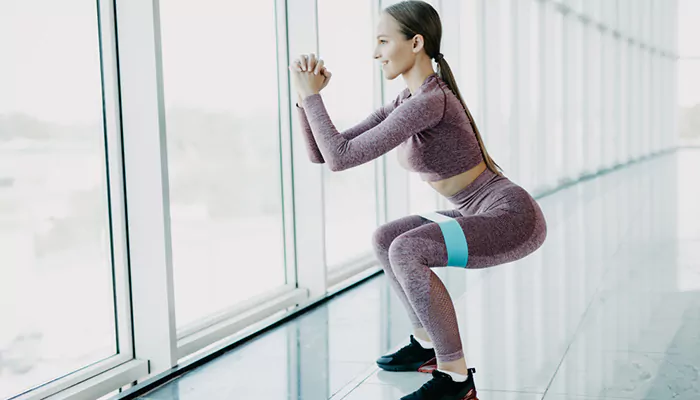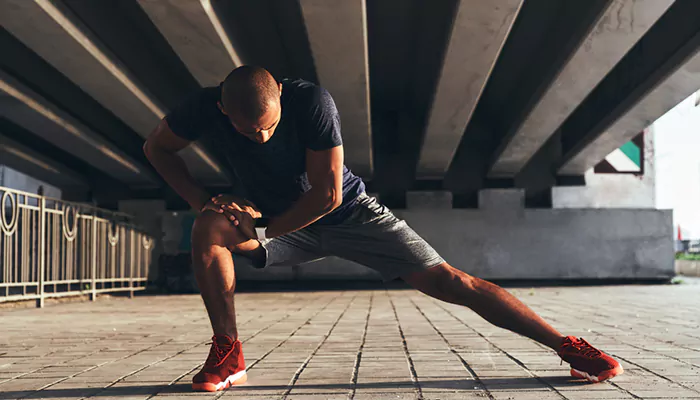
Tone inner thighs with these workouts to strengthen legs and get those summer-ready thighs
The inner thighs often find themselves relegated to the sidelines, overshadowed by their more prominently trained counterparts. However, neglecting these crucial muscles can have consequences beyond mere aesthetics.
Strengthening your inner thighs isn't just about sculpting sleek contours—it's about fortifying your body's foundation and promoting pain-free movement. A robust inner thigh regimen for overall lower body strength and hip injury prevention.
The benefits extend beyond injury prevention. Inner-thigh exercises play a pivotal role in bolstering lower-body and pelvic floor stability, thus aiding in the prevention of dreaded low back pain. Research has shown that a strong pelvic floor correlates with reduced instances of lower back discomfort. Hence, by honing in on your inner thighs, you're essentially laying the groundwork for a solid pelvic foundation—a crucial element in maintaining a healthy, pain-free lower back.
There are many practices for targeting those oft-overlooked inner thigh muscles. While the hip adductor machine might be a go-to option at the gym, it's vital not to solely rely on it. Variety is key in any well-rounded training regimen. Here is a list of exercises targeting inner thighs.
Sumo Squats
Sumo squats offer an excellent way to target the inner thigh muscles while also engaging the glutes, hamstrings, and quadriceps. To perform sumo squats effectively, start by assuming a wide stance with your toes pointed slightly outward. As you descend into the squat position, consciously push your knees out to the sides, actively engaging the inner thigh muscles. Maintain a straight back and keep your chest lifted throughout the movement to ensure proper form. Aim to complete 3 sets of 12-15 repetitions, allowing for adequate rest between sets to maximize effectiveness and muscle engagement.

Inner thigh lifts
Inner thigh lifts specifically target the adductor muscles, which play a crucial role in stabilizing the hips and pelvis. Lie on your side with your bottom leg bent for stability and your top leg extended straight. Lift your top leg as high as possible, focusing on engaging the inner thigh muscles throughout the movement. Lower the leg back down with control to complete one repetition. Aim to perform 3 sets of 15-20 repetitions on each leg, gradually increasing the intensity as your strength improves over time.
Reverse lunge to single-leg deadlift
This exercise seamlessly combines a reverse lunge with a single-leg deadlift, targeting both the inner thighs and stabilizing muscles. By starting with feet shoulder-width apart, you engage your core and shift weight onto one leg, activating the inner thighs for stability. The single-leg deadlift component further challenges balance and strengthens muscles along the back of the leg. Effective for addressing imbalances and enhancing stability on both sides of the body.
Bodyweight lunges
A classic yet potent exercise, bodyweight lunges target the inner thighs alongside other lower body muscles. As you step forward into a lunge, inner thighs stabilize the movement and support body weight. Maintaining proper form ensures engagement of inner thigh muscles, alongside activation of glutes, hamstrings, quadriceps, calves, and core. Incorporating bodyweight lunges strengthens inner thighs and boosts overall lower body strength and stability.

Cross-over lunges
To execute cross-over lunges correctly, start by standing with your feet hip-width apart. Step one foot diagonally behind the other, crossing over your midline. Lower your body into a lunge position, ensuring that your front knee stays aligned with your ankle to prevent injury. Push back up to the starting position and repeat the movement on the other side. This dynamic exercise targets the inner thighs while also engaging the glutes and hamstrings. Aim for 3 sets of 10-12 repetitions on each leg, focusing on maintaining proper form and controlled movements for optimal results.












